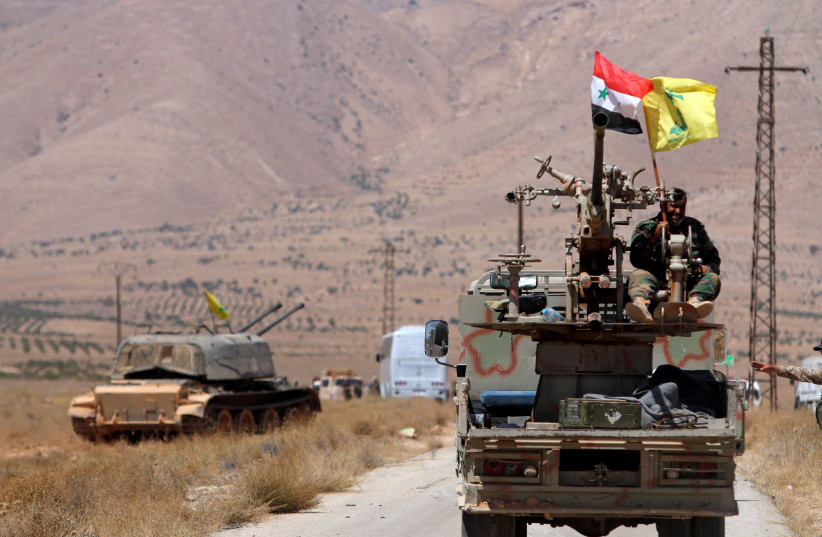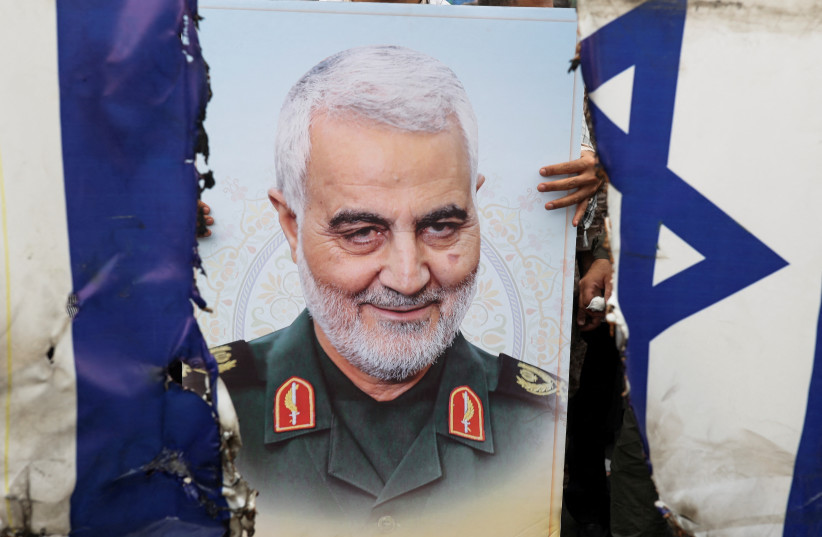The IDF is in the midst of an ongoing war against smuggling of weaponry from Iran to Syria, where they end in the hands of Lebanese terrorist organization Hezbollah.

A violent blast tore through a street of Masyaf, in a region of Syria known as a hub for the Assad regime-controlled Syrian defense industry, in August 2018. The attack, attributed by Syrian officials to Israel’s Mossad, killed rocket scientist Dr. Aziz Asbar.
“It was a hit on the soft underbelly of the Syrian regime, which has made great efforts since then to rehabilitate that field,” a senior former defense official said earlier this week.
The assassination of Asbar raised the issue of Iran, Hezbollah, North Korea and Russia’s involvement in the development of weapons on Syrian soil, especially among Western intelligence agencies and moderate Sunni states in the Middle East.
The Israeli war on weapon manufacturing, smuggling in Syria
But the Israeli battle began all the way back in 2005, following intel showing the development of chemical weapons in Syria.

Following Israeli intel and US sanctions on The Scientific Studies and Research Center (SSRC), which included sanctions carried out by the Trump administration on 271 individuals in the SSRC in 2017, the center was attacked.
The message to Assad was clear but Damascus was not moved, continuing the development and smuggling of weaponry to Hezbollah and Iranian-backed militias across Syria.
A year later, Dr. Asbar was assassinated and as time went on, his influence on multiple projects, especially precision-guided missiles, became apparent. It remains to be discovered how close the rocket scientist was to Assad, Iran’s slain Quds Force commander Qassem Soleimani and North Korean colleagues.
“It was clear Soleimani and Hezbollah Secretary-General Hassan Nasrallah led a plot to gain control of the research center and its production lines,” the former defense official said. “In other words, a significant route for smuggling high-quality weaponry opened in Syria for Iranian miltias and Hezbollah.
“Israel cannot tolerate this,” he added.
Over the past year, Tal Barry, head of research at Alma, has been working on wide-ranging research on the different production facilities in the SSRC. Those include Institute 1000, Institute 2000, Institute 3000, and Institute 4000.
According to Barry, some of Institute 4000’s infrastructure, which mainly produces precision-guided missiles, was moved sometime during the Syrian Civil War to Masyaf, where Asbar headed the project until his mysterious death.
Institute 4000 also holds other, small-scale projects, Barry said, such as ‘Project 99’ for developing Scud missiles along with North Korea and Iran. Another branch, Project 794, is particularly interesting due to its proximity to a Russian base along the Syrian coast.
Alleged Israeli efforts to damage Insitute 4000 projects
In August, Syrian air defense systems were activated following an airstrike on Insitute 4000 facilities in Masyaf. Several buildings were completely destroyed, including one which reportedly contained a missiles cache that burned for two days.
Earlier this month, efforts to rebuild the damaged structures began. “Those leading the efforts are Iranian construction companies associated with the IRGC,” Barry explained.
“What is the end goal? serve Iranian interests in Syria and Hezbollah’s in Lebanon…Hezbollah will have autonomous capabilities in Beirut. If Tehran could, it would move it all to Lebanon but they are facing difficulties, there is no infrastructure in Lebanon.
The scope of attacks attributed to the IDF, headed by Chief of Staff Lt.-Gen. Aviv Kohavi, suggest that Iran and Hezbollah are far from meeting deadlines on projects set years prior by Soleimani, who was assassinated in 2020. His replacement has since visited Syria and Lebanon but spends most of his time in Iran and Iraq, monitoring the Quds Force’s takeover of the SSRC facilities under Assad’s nose.
“We think the Iranians, under the auspices of the Assad regime, operate at border crossings and airports through various means,” a senior defense official told Walla. “As long as the Syrians refuse to address it, even if it is happening without their knowledge…someone needs to take care of it.”
Content retrieved from: https://www.jpost.com/middle-east/article-720969.